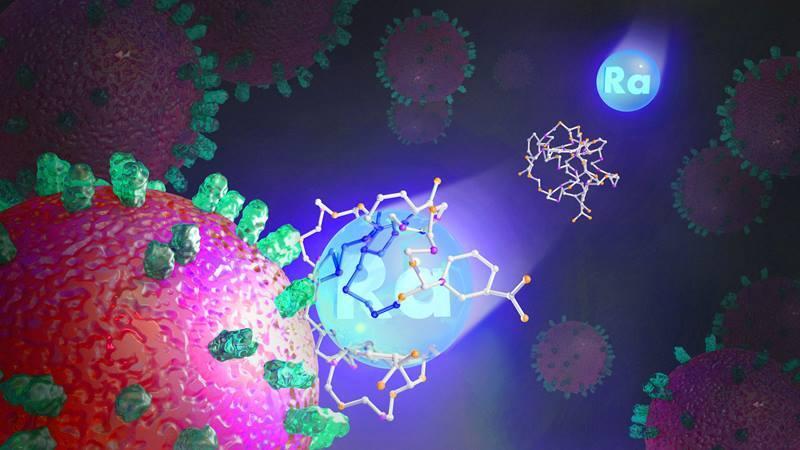Capturing the Chemistry of Radium-223 for Cancer Treatment

This image depicts a binding molecule delivering radium-223 to a cancer cell. Image courtesy of Adam Malin, Oak Ridge National Laboratory.
Until now, there have been few efforts to get information on how radium binds with known chelators. To address this gap, scientists at Oak Ridge National Laboratory (ORNL) used experiments and computer-driven models to learn about two state-of-the-art binding molecules, macropa and DOTA. Researchers already knew these two molecules could bind the radium ion in water, but they didn’t know how stable those bonds were. Past studies looked at only simple organic molecules that are less relevant for use in medicine.
The work determined that the Ra−macropa complex had a more stable bond than that of any other studied Ra complexes under normal biological conditions. The Ra−DOTA complex was only moderately stable when the sodium ion was present, but its stability increased under sodium-free conditions. The study showed that, as scientists already had thought, chelators form bonds with radium that are primarily ionic. That means highly charged chelators can form highly stable complexes. But it also highlighted how important it is to look at the effects of sodium and other competing ions present in the body when finding the right chelators for Ra-223-based targeted alpha therapy. Scientists must consider ionic interactions, metal-ion selectivity and the chemical makeup of the chelator when designing molecules to stabilize radium.




